Seattle, WA Pollen and Allergy Report for Summer 2023
Pollen Allergy Trends in Seattle, WA
When is pollen lowest in Seattle, WA?

February
Lowest month total PPM
Avg. PPM
When is pollen highest in Seattle, WA?

May
Highest month total PPM
Avg. PPM
How does pollen in Seattle, WA compare to Washington?
Seattle has a lower average PPM than the state of Washington.
Seattle yearly avg PPM:
Washington yearly avg PPM:
How does pollen in Seattle, WA compare to the USA?
Seattle has a lower average PPM than the USA.
Seattle yearly avg PPM:
USA yearly avg PPM:
Is pollen worse this year in Seattle, WA?
Spring 2023 was worse than spring 2022.
Spring 2023 PPM:
Spring 2022 PPM:
Average PPM in Seattle, WA
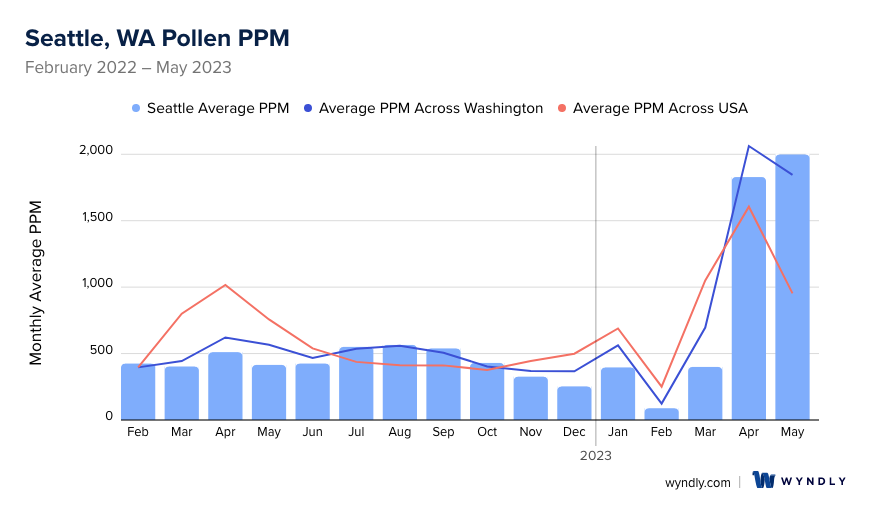
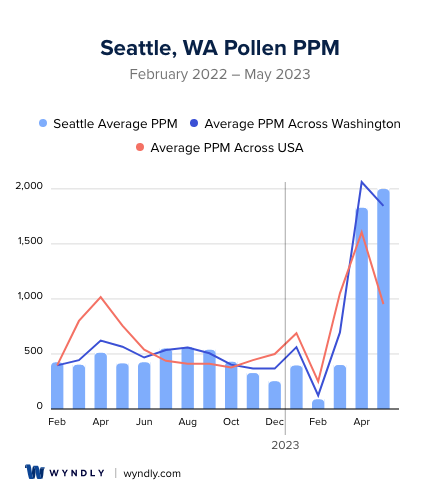
Seattle, WA Pollen and Allergy Breakdown by Month
Grass
When is grass pollen highest in Seattle, WA?
March has the highest grass pollen in Seattle, WA with an average PPM of
When is grass pollen lowest in Seattle, WA?
November has the lowest grass pollen in Seattle, WA with an average PPM of
Tree
When is tree pollen highest in Seattle, WA?
May has the highest tree pollen in Seattle, WA with an average PPM of
When is tree pollen lowest in Seattle, WA?
April has the lowest tree pollen in Seattle, WA with an average PPM of
Weed
When is weed pollen highest in Seattle, WA?
August has the highest weed pollen in Seattle, WA with an average PPM of
When is weed pollen lowest in Seattle, WA?
February has the lowest weed pollen in Seattle, WA with an average PPM of
Seattle, WA Pollen Monthly Breakdown by Pollen Type
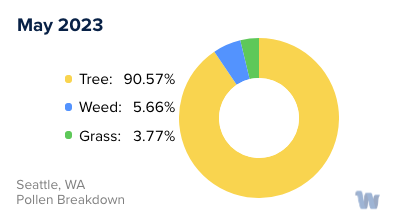

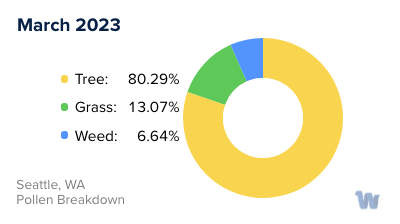
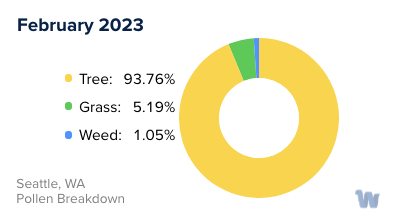





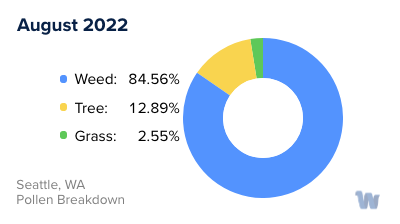
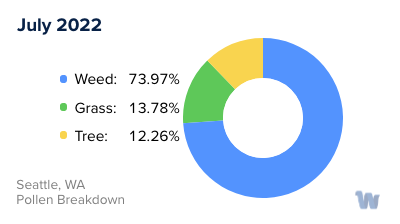
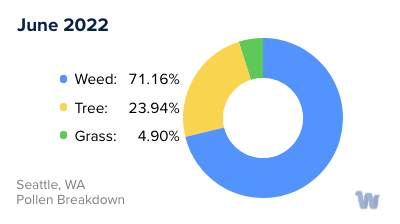

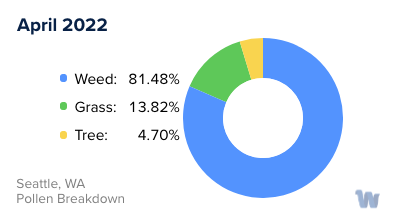


Pollen and Hay Fever in Seattle, WA
In the vibrant city of Seattle, Washington, a diverse array of flora contributes to the city's verdant beauty. However, for residents with pollen allergies, this botanical bounty can also lead to discomfort during certain times of the year. Pollen allergies, often referred to as hay fever or allergic rhinitis, are caused by the body's immune system reacting to pollen grains that are released by trees, grasses, and weeds.
In Seattle, tree pollen is typically the first to make its appearance in the year. As early as late winter and into spring, alder, cedar, and maple trees begin releasing their pollen. These trees are common throughout the Pacific Northwest, and their pollen grains can be carried by the wind, leading to widespread exposure.
Following tree pollen season, grasses step into the spotlight. By late spring and into the early summer, grasses like ryegrass and Kentucky bluegrass are releasing their pollen. These types of grasses are frequently found in lawns and parks throughout Seattle, making grass pollen season a particularly challenging time for many allergy sufferers.
Finally, as the summer gives way to fall, weed pollen takes over. This final pollen season of the year is dominated by weeds such as ragweed and sagebrush. Ragweed is particularly noteworthy as a single plant can produce up to a billion grains of pollen in a season.
Despite its reputation for rain, Seattle's climate can exacerbate pollen allergies. On dry, windy days, pollen can be swept up and dispersed throughout the city, increasing the likelihood of exposure for those with allergies. Furthermore, the city's mild winters and warm summers create a long growing season, meaning that pollen can be present in the air for a large part of the year.
Understanding the types of pollen and their seasons can help Seattle residents anticipate and prepare for allergy symptoms. While this knowledge won't prevent allergic reactions, it can provide a sense of control and predictability in navigating life with pollen allergies in the Emerald City.


